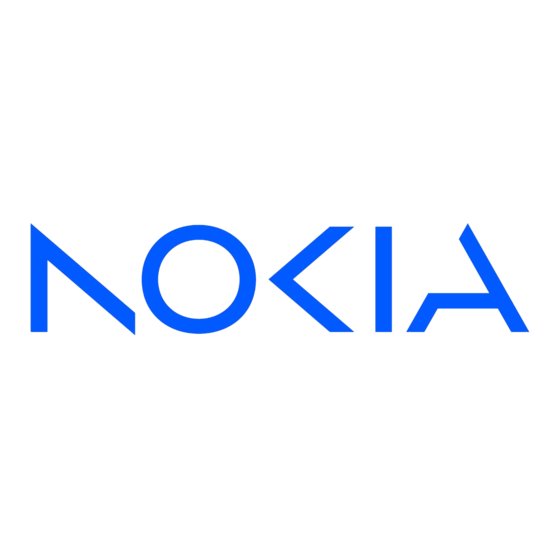

Nokia Asha 309 Eco Profile
Hide thumbs
Also See for Asha 309:
- User manual (125 pages) ,
- Service manual (26 pages) ,
- Service schematics (7 pages)
Advertisement
Quick Links
Download this manual
See also:
Service Manual
Environmental features
MATERIALS AND SUBSTANCES:
Free of PVC, free of nickel on the product
surface, free of brominated & chlorinated
compounds and free of antimony trioxide
as defined in Nokia Substance List
USER GUIDE:
One colour printing
Materials used
Through careful material selection we aim to reduce the environmental impact of our products. The chart below shows the estimated
proportions of the materials used to create this mobile device.
E.g. stainless steel, copper, zinc, aluminium.
Metals:
Nokia's products contain ~0.1-0.2% precious metals.
Ceramic materials:
Glass, other ceramics.
Plastics:
E.g. ABS/PC, PET, PA, epoxy.
E.g. lithium cobalt compound, graphite, aluminium,
Battery:
copper.
Non-metals such as silicon. Other materials such as
Other:
glues.
Find out more about the materials used to create Nokia products at
Sales package content and product features might vary depending on region and product variant.
Copyright © 2011. All rights reserved. Nokia is a registered trademark of Nokia Corporation.
Nokia Asha 309/3090
Eco profile
Product:
Product type:
Weight:
Dimensions:
Volume:
Package:
Weight:
Dimensions:
Volume:
Material:
PACKAGING:
Made of renewable material, Contains up
to 60% recycled material, Packaging is 100
% recyclable, Minimized package
ENERGY EFFICIENCY:
Unplug charger reminder, Energy efficient
charger
04.04.2013
Nokia Asha 309
Mobile device
102 grams (including battery)
Length: 109.9 mm x Width: 54 mm x Height: 13 mm
3
66.7 cc (cm
)
34 grams
Length: 137 mm x Width: 90 mm x Height: 55 mm
3
678 cc (cm
)
Corrugated board
RECYCLING:
All materials of the device can be
recovered as materials and energy
ECO CONTENT AND SERVICES:
Available at Nokia Store
Other
1%
Battery
19%
www.nokia.com/materials
Metals
39%
Ceramic
materials
7%
Plastics
34%
Advertisement

Summary of Contents for Nokia Asha 309
- Page 1 Find out more about the materials used to create Nokia products at www.nokia.com/materials Sales package content and product features might vary depending on region and product variant. Copyright © 2011. All rights reserved. Nokia is a registered trademark of Nokia Corporation.
- Page 2 Restricted substances Nokia is an industry leader in substance management. We proactively manage and keep track of all the substances in our products, not just those that raise concerns. We have strict requirements for substances that are not allowed in Nokia products.
- Page 3 The above energy use and greenhouse gas emissions figures are based on a Life Cycle Assessment in accordance with the ISO 14040 and ISO 14044. These calculations take into account the raw materials acquisition, component manufacturing, Nokia’s own factory processes, inbound & outbound logistics, usage (3 years) and recycling of the mobile devices. The source data is measured at our own factories and operations and collected from suppliers.













